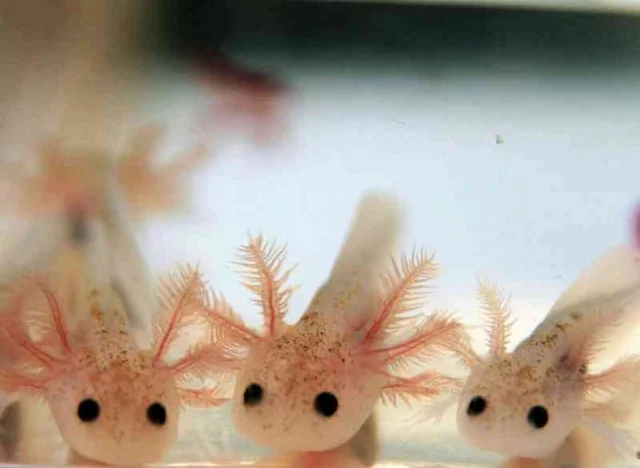You cannot go wrong with an aquarium full of axolotls. This Mexican walking fish, a fish-salamander hybrid, may live up to 100 years. So, how long do axolotls have a life span? It all depends on whether or not they’re in captivity. In the wild, they may expect a lifetime of 5-10 years; in captivity, they can expect a lifespan of 10-15 years; on average, they live 12 years. Let’s check out the Lifespan Of A Axolotl.
Table of Contents
What Is The Lifespan Of An Axolotl?
Axolotls in captivity normally live for 10 to 15 years, but they may survive for up to 20 years with proper care. Some salamander animals have very long lives, so axolotls might surprise us with their longevity as they become increasingly popular pets. The Axolotl, despite its tiny size, has a longer lifespan than most people think when they get one as a pet. The capacity to regenerate bodily parts like limbs and organs is part of their resilience.
Axolotls Are Known For Their Longevity In The Wild
When feasible, axolotls try to stay away from other animals and avoid conflict. On the other hand, Axolotls are sluggish swimmers, lack agility, lack fangs or claws, and have no genuine defense mechanism. As a result, they’re a simple target for any predators. As a result, seeing an axolotl older over ten years in the wild is very unusual; even living for five years is a significant achievement for a natural axolotl.
Domestic Axolotls Are Known For Their Long Lifespans
You may anticipate a well-cared-for Axolotl to live with between the ages of 10 and 14 in a home tank, with 12 years as the median. It’s critical to emphasize that only well-cared-for axolotls will reach this maturity stage.
Put another way, these organisms are very delicate and easily killed. However, they may survive for approximately 20 years if properly cared for.
Do They Die Easily?
It’s easy to lose an Axolotl if you don’t have the right supplies. An axolotl’s lifetime is greatly influenced by its water quality.
To keep their lifespans and health in control, they are very attentive to environmental fluctuations. The Axolotl’s lifespan will be shortened if you don’t monitor the tank’s water quality and temperature.
Axolotls are cool-blooded creatures and should not be kept in tanks above 22°C in temperature. The longevity of the Axolotl will be substantially reduced if this trend continues, and the species’ health will deteriorate.
Final Verdict On Axolotls Life Span
Many people keep axolotls as pets for more than 20 years, with an average lifespan of 10-15 years. Water quality, nutrition, tank size, and habitat must all be considered.
An aquarium cooler or tank fan will help maintain the temperature of the axolotl tank from reaching dangerous levels if water issues arise. Adult Axolotls may be fed worms and crustaceans and frozen meals, pellets, or dead prey to ensure they get the required nutrition.
In addition, you must maintain the axolotl aquarium clean at any time to increase the Axolotl’s lifetime. The Axolotl has a lengthy life expectancy if they are correctly cared for. Make sure your Axolotl has enough room to live alone since they are more mellow when they are alone than when they share a tank.
In addition, the aggressiveness of tank mates and the consumption of tiny fish might cause impactions, limiting their longevity.
I hope you have got the details of Lifespan of a Axolotl.
